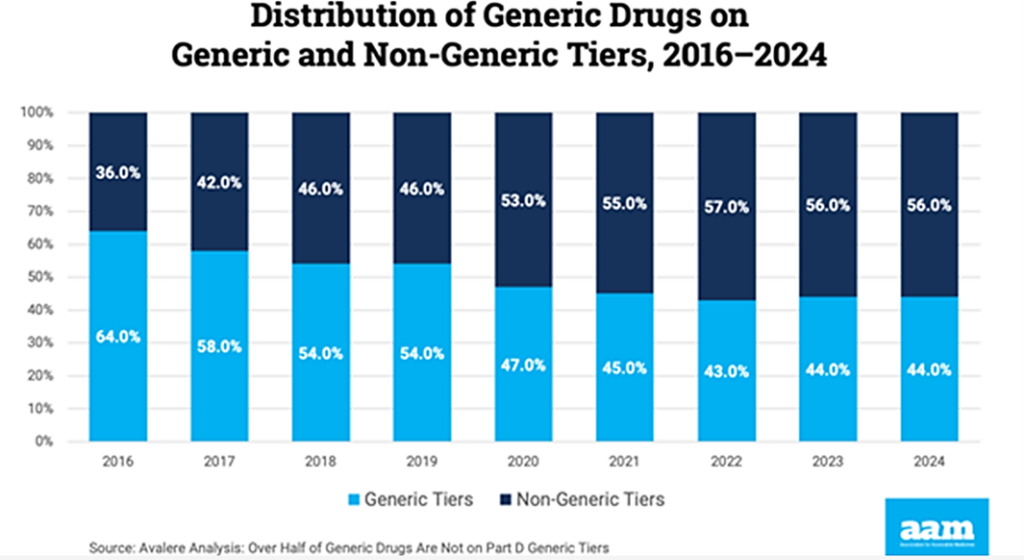One would think that such a large government program as Medicare’s Part D prescription drug plan would be looking to save money wherever it can for the people it serves (as well as all taxpayers). With the focus on high drug prices, the Medicare Part D program was designed to save seniors money, but clearly something has gone awry.
AAM released a statement (here) on an analysis performed by Avelere (here), which shows that Medicare plans increase patient costs for generic medicines. This issue is related to the medication tiers in which the Part D plans place the drugs. David Gaugh, Acting President and CEO of AAM, noted, “Fewer than half of all generic drugs are on generic formulary tiers. Plans are profiting from patients using generic drugs through higher copays and placement on brand formulary tiers, even as generic prices continue to fall. AAM encourages the Administration and Congress to ensure that Medicare beneficiaries receive the full value of low-cost generics.”

Generics have saved over three trillion dollars over the past ten years; however, the AAM statement notes, “In recent years, as prices for generic medicines continue to fall, many Medicare Part D plans continue to place generics on higher tiers with higher copays. This forces seniors to pay more for lower-cost generic medications, and the copay is often significantly more than the cost of the medication.”
There needs to be a fix to this irrational pricing model. Congress must move to ensure that generic medications on Medicare plans are properly placed on tiers that are reflective of the savings they can produce for the program and the patients. It is said that “if you don’t like it, write your congressmen.” Well, I did, but with the sad state of politics in this country, it seems that, even though everyone thinks this is a good idea, the House and Senate can’t seem to get their act together to make this happen. Sure, it’s not as easy as waving a magic wand, but come on now, folks! The high cost of prescription drugs is not a new problem.




